Young people and walking
In collaboration with the Youth Affairs Council Victoria, and funded by VicHealth, Victoria Walks have taken a detailed look at the issues surrounding walking for young people.
We commissioned Dr Jan Garrard from Deakin University to produce the report Young People and Walking. The project involved a desktop literature review, five focus group discussions and an online survey of 1089 people in Victoria aged 15 – 20 years (75% female).
View the report
(see bottom of the page for full report options)
Some of the key findings are illustrated below.
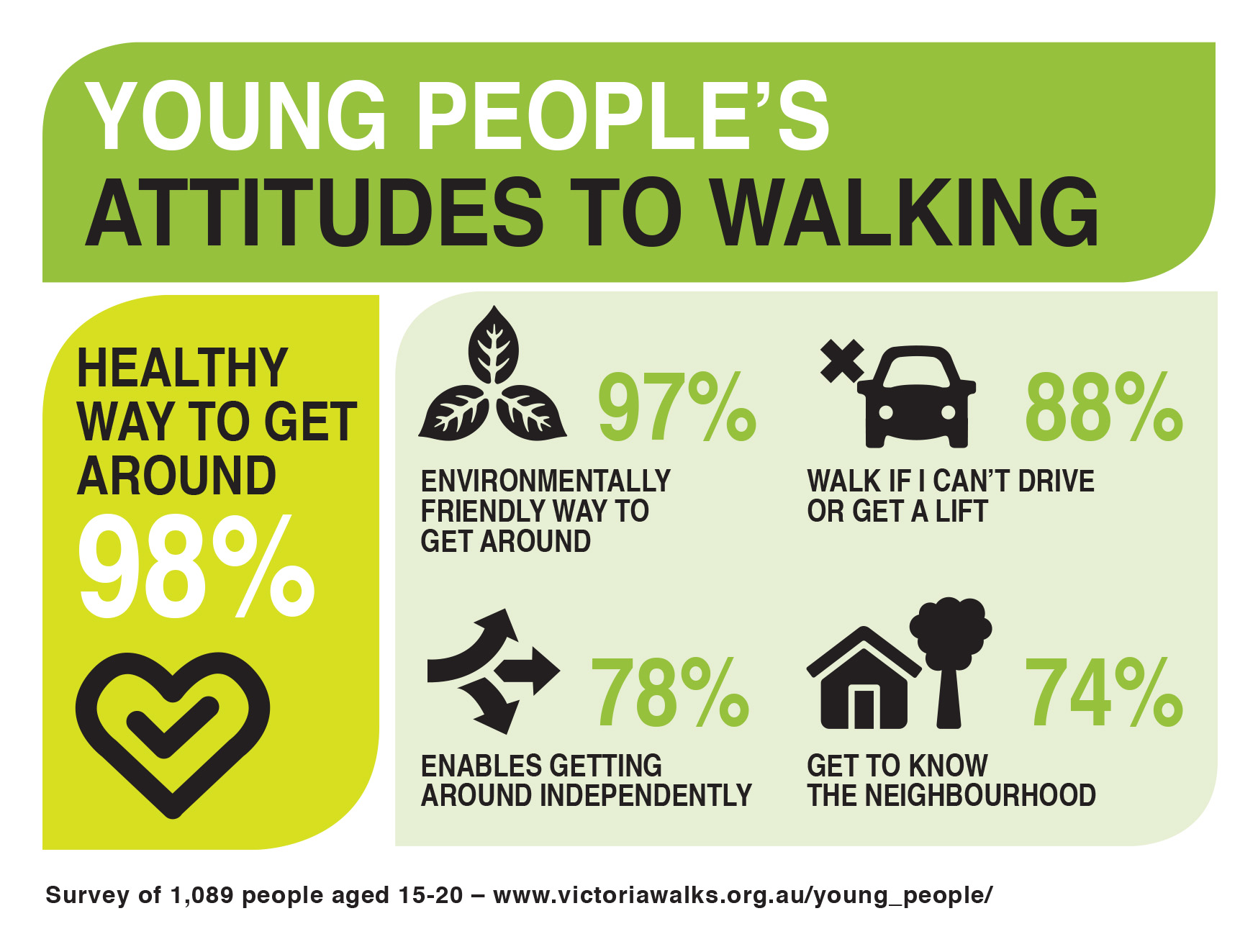
Walking, often combined with public transport, provides a critical opportunity for young people to lead independent lives. Suburban environments that are difficult to walk around or to use public transport leave many young people reliant on parents or others to drive them.
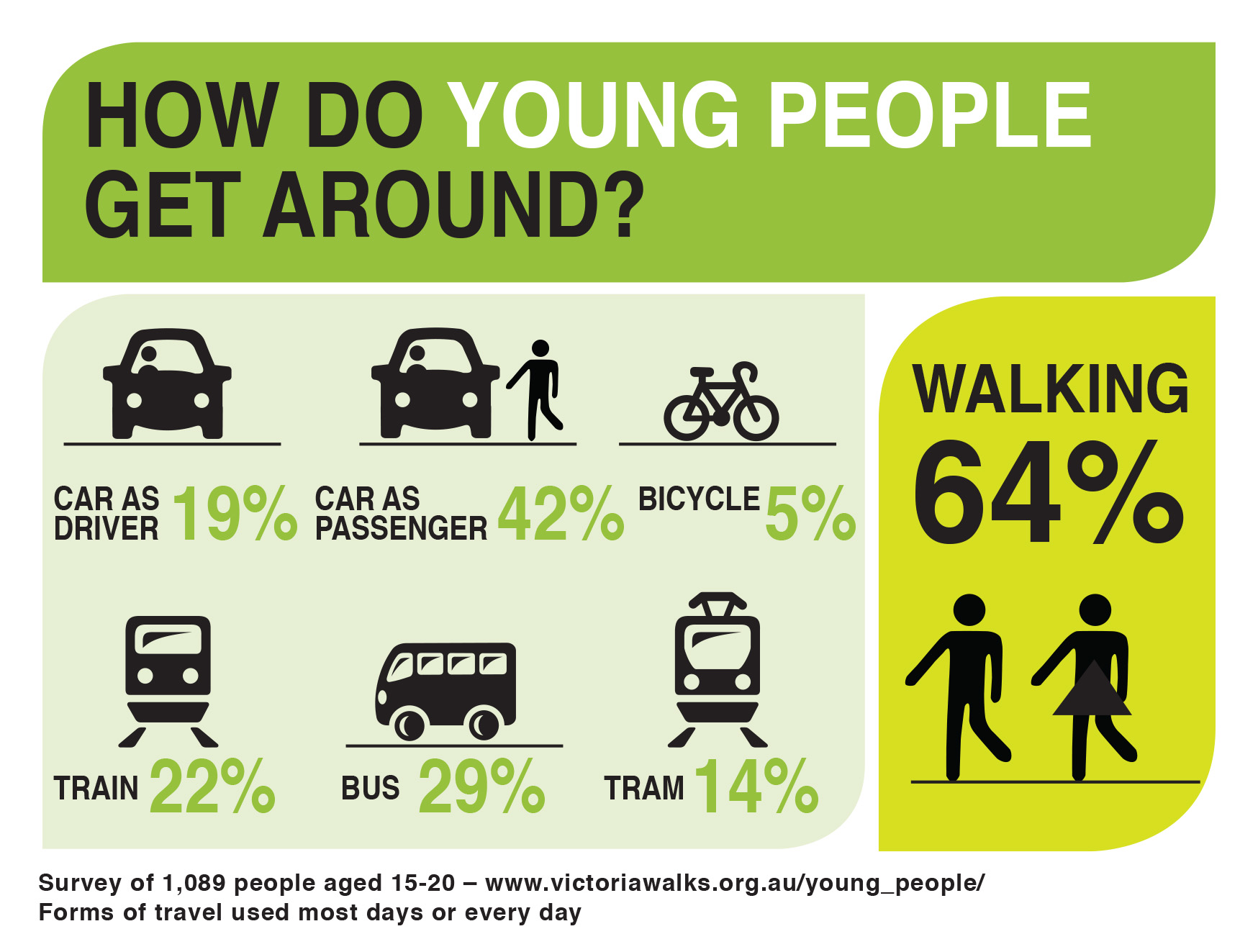
Walking is highly important to young people's everyday lives, with about two-thirds of our survey respondents walking to get places on most days or every day.
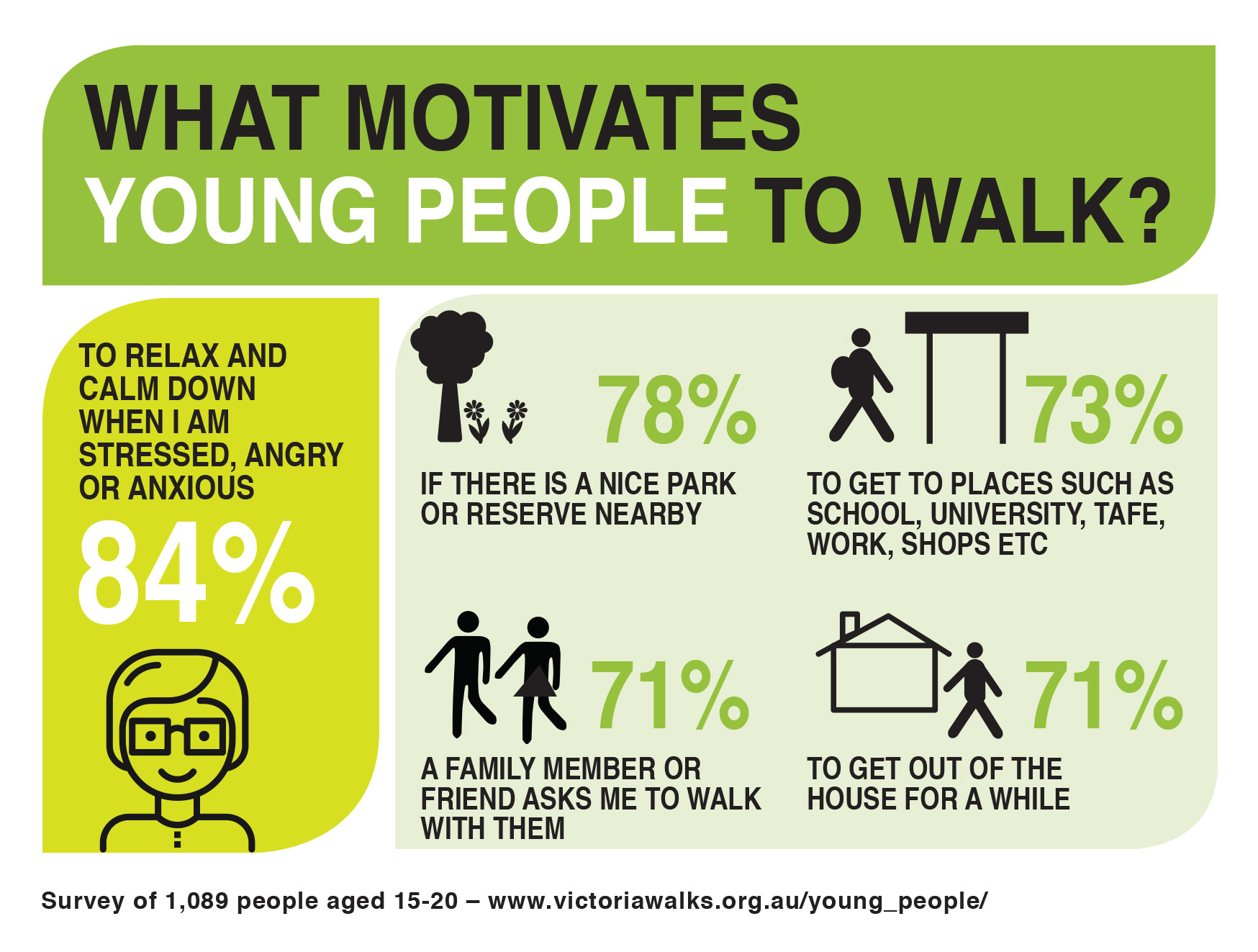
Walking is surprisingly important to young people's mental health. The most popular motivation for recreational walking was to relax and calm down when stressed, angry or anxious.
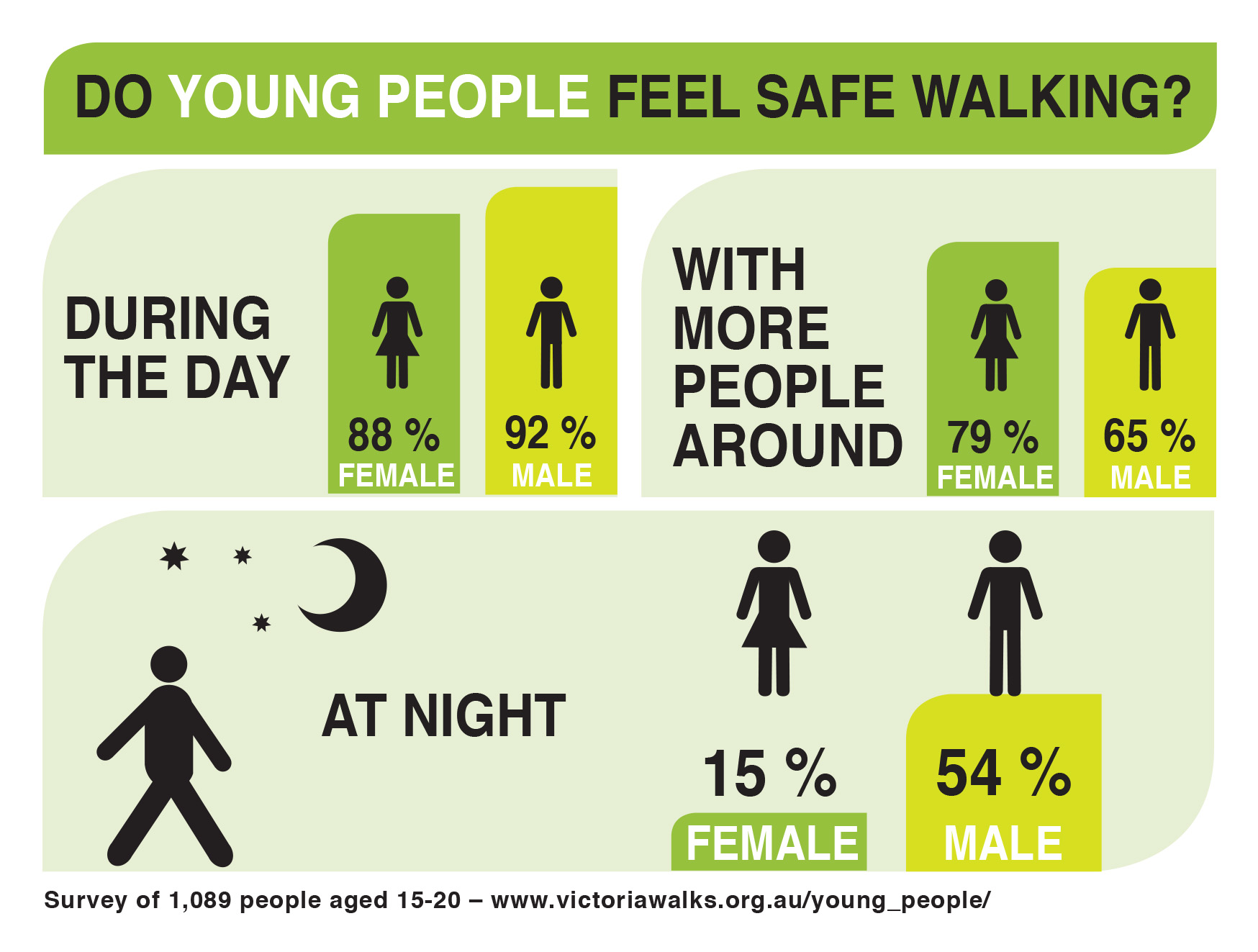
While most young people feel safe walking around during the day, this is not the case at night, especially for young women. Many told us of their experience of being harassed on the street:
“I also get cat called sometimes when walking which is even more intimidating. I’m a 15 year old girl. Men should not be catcalling me but they do.”
The ‘safety measure’ of young women avoiding walking alone in public places at night restricts their independent mobility and participation in public life.
In addition to personal safety, road safety is also an issue. Only about half of the young people surveyed agreed that they can depend on drivers to obey the road rules and give way to pedestrians when required.
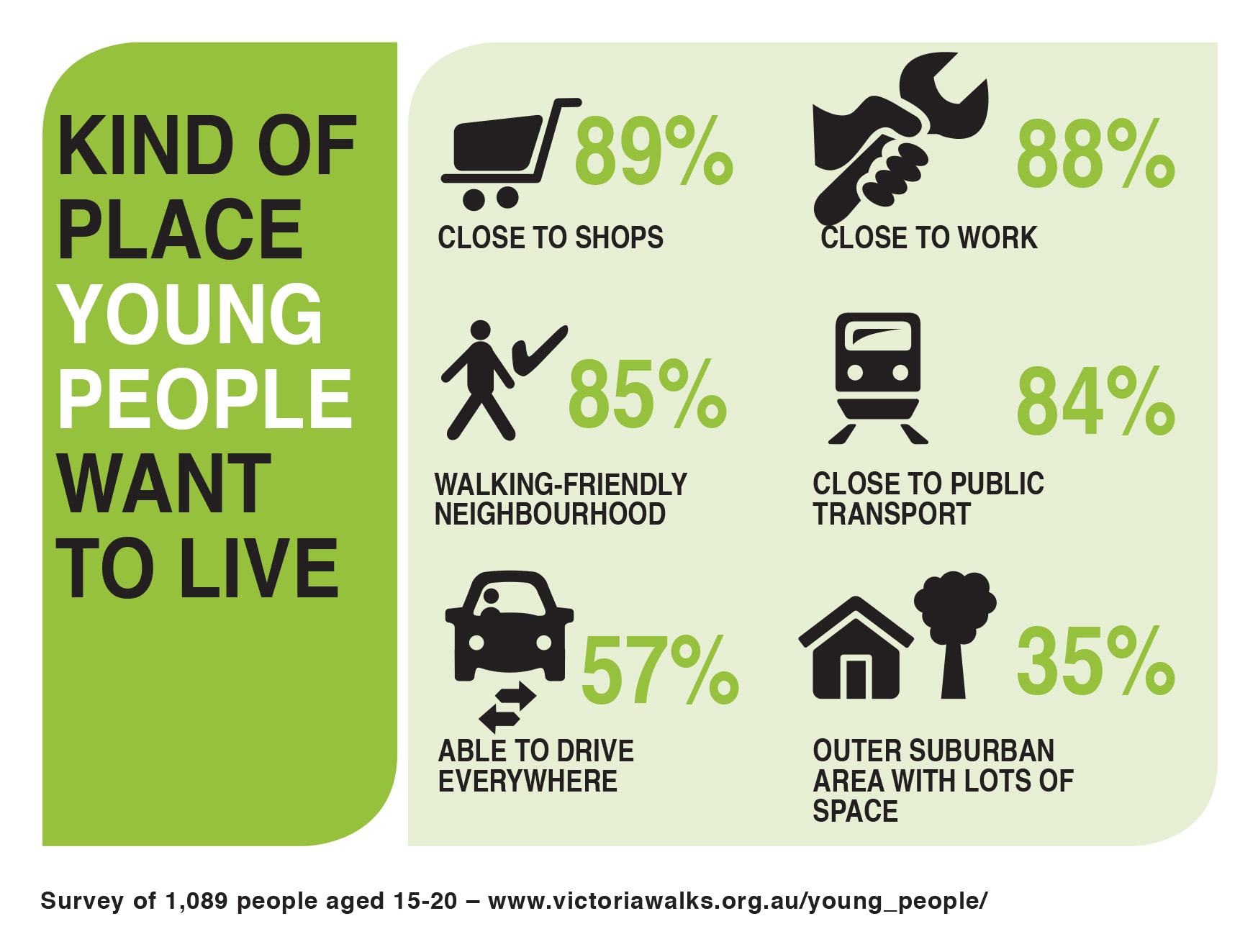
When we asked them what kind of community they wanted to live in, the vast majority of young people considered it important to be close to shops, services and entertainment; work or study; public transport and live in a walking friendly neighbourhood. They also want to live in safe, inclusive communities.
In response to an open-ended question, the top suggestions for improving walking conditions were: to provide footpaths and walking trails; improve street and park lighting; and improve road crossings for pedestrians.
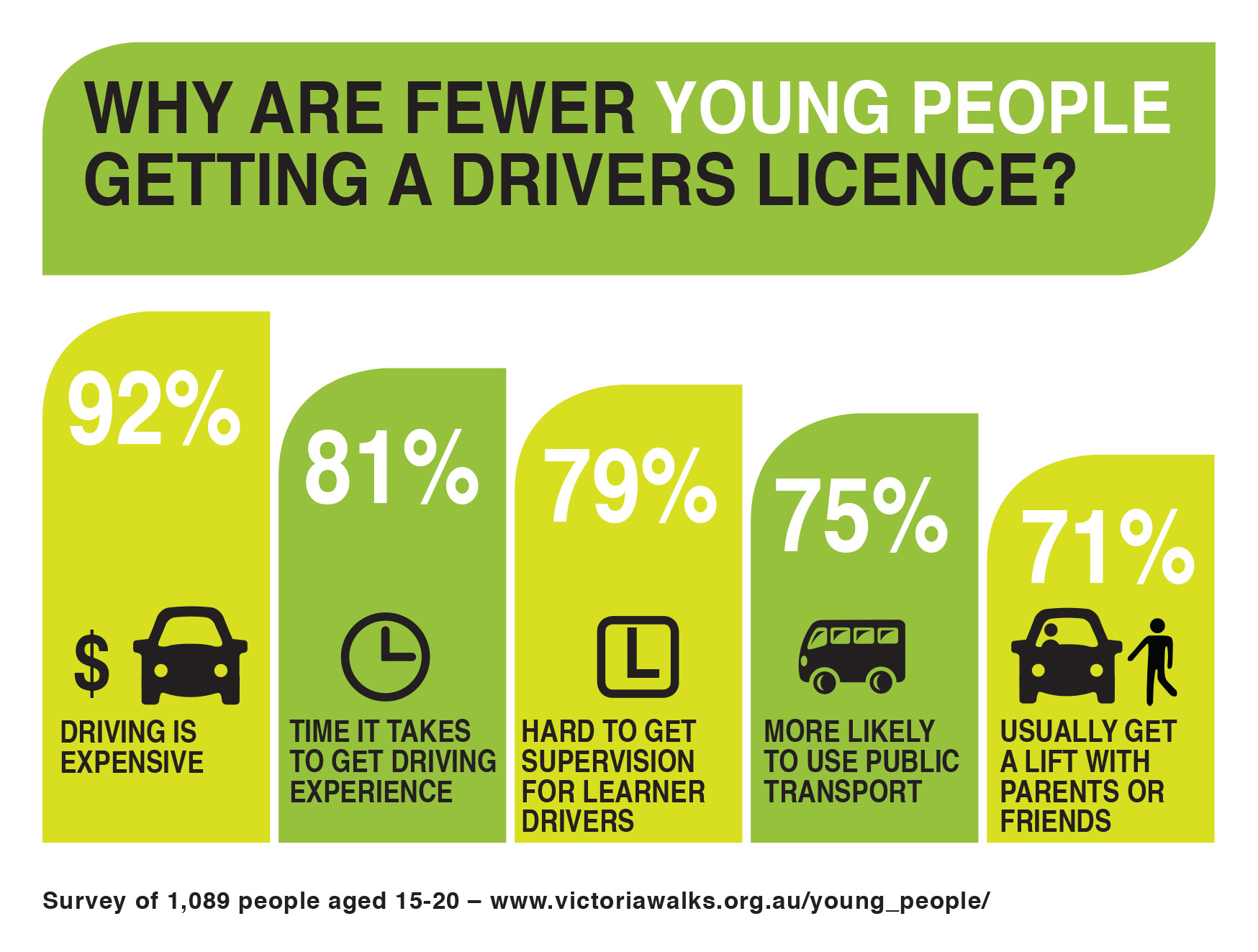
The survey asked why young people are putting off getting a driver’s licence. In 2001, 71% of those aged 18-21 held a licence, but that dropped to 59% in 2014.
The research found young people are delaying getting a licence because of factors like the cost, time and difficulty involved and they are happy to walk and use public transport, if it’s convenient. There is an opportunity to continue this trend of reduced driving into later years and reduce traffic on the roads, but only if there is investment in walking and public transport.
Reports
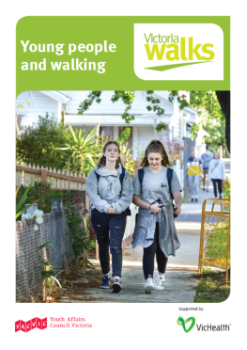
Two reports on the research are available:
- The Young People and Walking report (50 pages) provides an overview of the research.
- The full project report (178 pages) provides extensive additional detail on all aspects of the study.